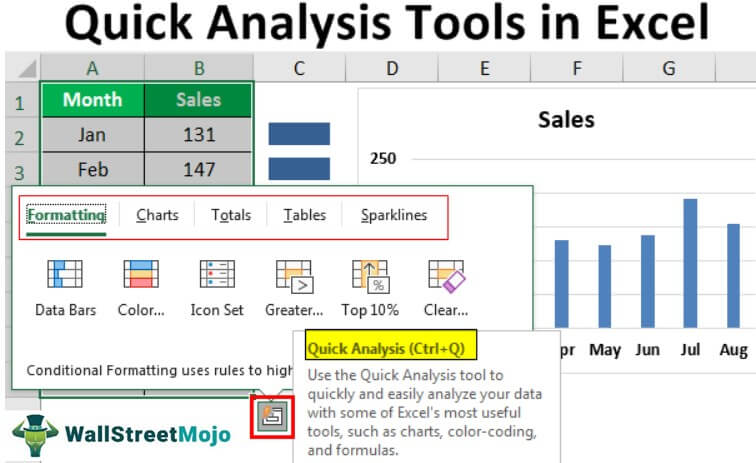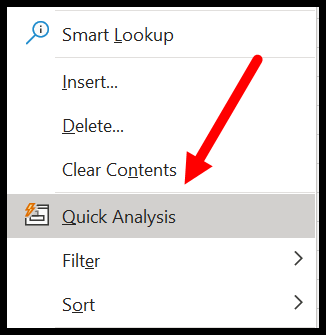

- #Find the quick analysis tool in excel 2010 how to
- #Find the quick analysis tool in excel 2010 download
– Select the columns you want to unpivot. You might want to add proper column names to the table since the default names are: Row, Column, and Value.ī) Unpivot columns using Power Query (this is the quick and easy way) To unpivot the data just double click on the grand total cell of the PivotTable (bottom-right corner):Īfterward, the data set will be shown in a tidy format on a new worksheet: Click on ‘0’ page fields and click on Next:Ī PivotTable will be created with the same structure of the original data source. – Click on the range selection button to select the range that contains the data. – In the next step, select ‘I will create the page fields’ and click Next. Select ‘Multiple consolidation ranges’ and click Next. Press Alt + D + P (this will open the legacy PivotTable dialog box, see below)

You can accomplish this using multiple consolidation ranges in Excel or using Power Query.Ī) Unpivot columns using multiple consolidation ranges (this is the large and cumbersome way The best format for data analysis would be as follows: Let’s say you receive the following data set:Įven though it looks visually appealing it isn’t very useful for PivotTables and other types of features. For example, if you’re creating a PivotTable of shipments you need to have all the shipment values in the same column. Unfortunately, you won’t always receive the data in that tidy format. If you’re going to create a PivotTable or use any statistical package, it’s strongly recommended to have each variable on a single column. Unpivot columns in a dataset (multiple consolidation ranges and power query)
#Find the quick analysis tool in excel 2010 download
Note: Within Excel 2016, the Power Query features can be found in the Get & Transform group of the Data tab. Use this link to get more information about Power Query or to download it.įor the following tips, I’ll assume that you already have the data within Power Query. This Add-in helps you to extract, transform, and load your data with just a few clicks. Power Query is a built-in feature in Excel 2016 and an Add-in for Excel 2010/2013.
#Find the quick analysis tool in excel 2010 how to
With each of the tips for data cleaning, you’ll learn how to use a native Excel feature and how to accomplish the same goal with Power Query. In this post, I’ll show you some Excel tips you can use at each of the data analysis stages. However, the tricky part you probably struggle with is knowing how to access and apply the right functionalities to your data. The application is advanced yet user friendly enough for the average user. While these may be impossible to handle manually, they’re perfectly manageable with Microsoft Excel. Data Visualization: Use graphs or other type of visualization technique to show your results.Data Analysis: Perform the necessary calculations to extract useful information.


Data Cleaning: Transform and rearrange the data in a way suitable for data analysis.And whether you’re analyzing a client’s data or using your company’s data to make executive decisions, your tools have to be able to handle the tasks you perform with that information.įor instance, if you’re a data analyst, most of the time you go through these stages of data analysis: You can’t manage one without affecting the other. It’s an obvious, well-known fact that data and business go hand in hand.


 0 kommentar(er)
0 kommentar(er)
